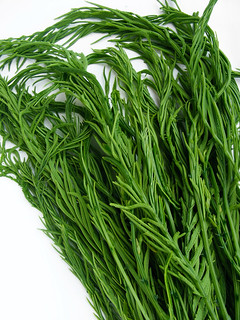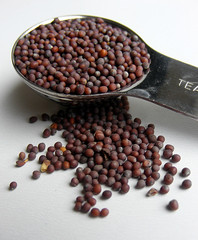 What’s it called?
What’s it called?
Acacia leaf, climbing wattle, stinky leaf, Acacia pennata / Senegalia pennata (L), cha-om / ชะอม (Thailand), su pout ywet (Birma), khang (India).
What is it?
Cha-om are the young leaves of the Acacia Pennata, a small member in the Acacia family, mainly known in Thailand, Burma, Laos and Indonesia. At first glance you might think it’s some sort of dill, but when looking closer you see the leaves look a bit like feathers or fern (photo). The woody stalks have nasty thorns (photo), you only eat the tender leaves.
How to use it?
Raw cha-om has a bit of a nasty, metallic smell, that’s why some people call it “stinky leaf”. You could eat it raw if you’d really want to but usually it’s cooked or stir-fried because that will eliminate the nasty smell completely. The taste will turn nutty, warm and fragrant. Wash the cha-om, then pick the leaves and disregard the stems. You can use the leaves in soups, curries and stirfries, but most commonly it’s used in omelet.
Tips, tricks & recipes
- Recipe: simple cha-om omelet
- More info: thaifoodandtravel.com.


